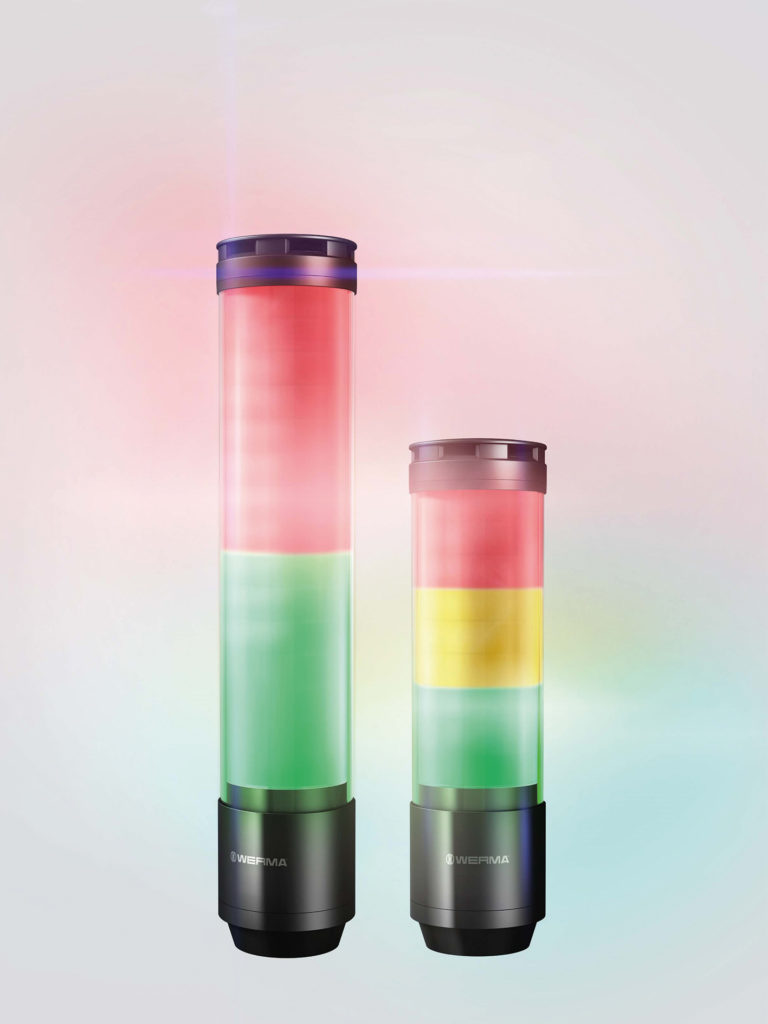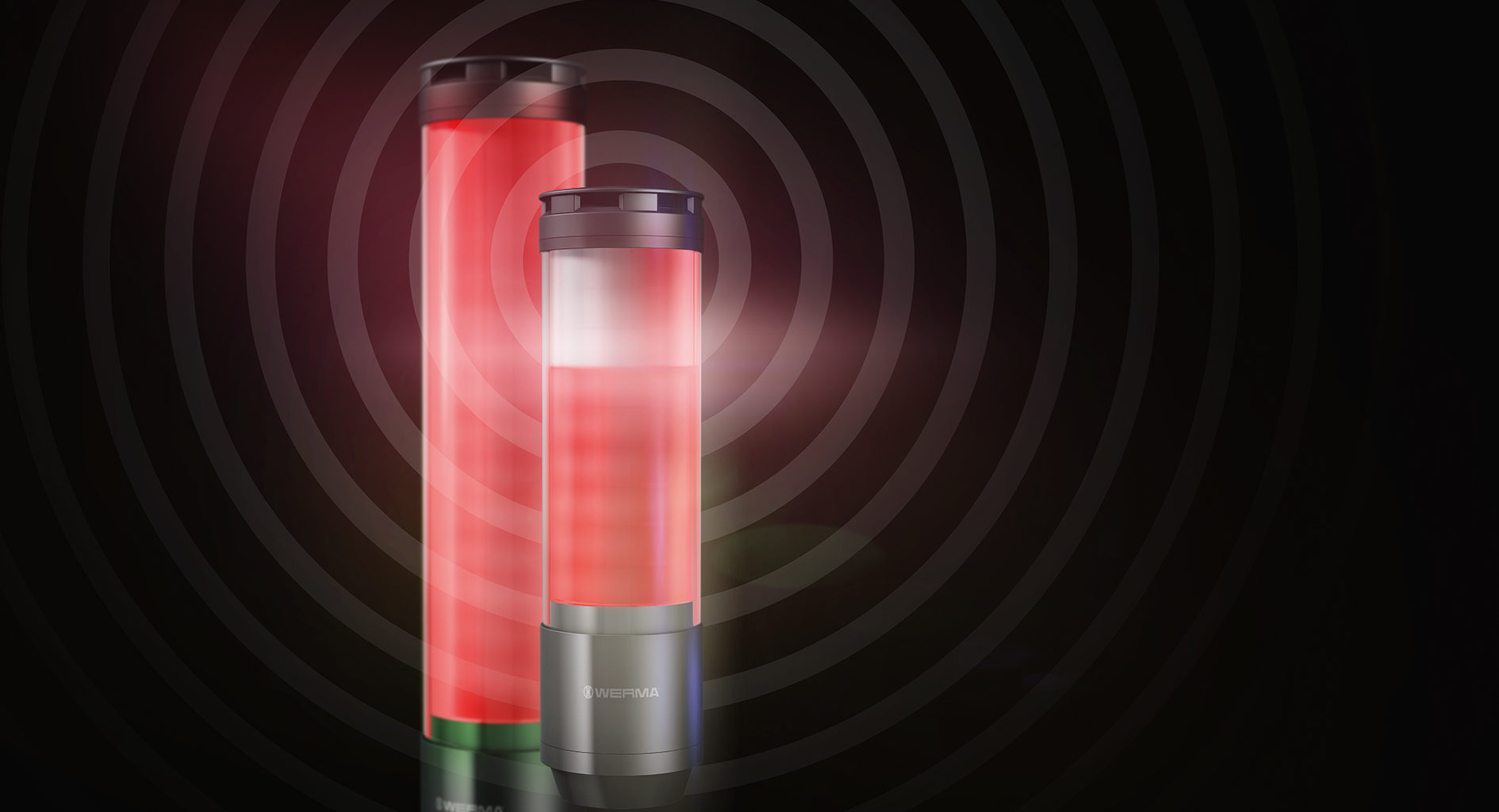
Frank Bühler Head of Product and Project Management at Werma Signaltechnik
Since 2019, Frank is responsible for classic visual and audible signaling devices, as well as for the software product range for process optimization. His focus is on innovation management and the user experience approach. After his master degree in mechanical engineering and international sales management, Frank worked at Syntegon (formerly Bosch Packaging technology) and held various positions. In his last position, he was head of product management and marketing for the secondary packaging product group.
1. Can you briefly introduce WERMA and its technology and how WERMA Signal devices evolved over the years?
WERMA is setting the standards for modern signal technology and defining its future – and has been doing so for almost 75 years. In 1994, Managing Director and inventor Erich Marquardt presented the patented 5-stage modular KombiSIGN signal tower for the first time. Innovations like these form the basis of a sustainable worldwide growth – until today with more than 360 employees at 8 locations.
Over the last few years, signaling technology has become increasingly energy-efficient and, thanks to modern interfaces, can be used in a variety of ways – right up to networked, intelligent system solutions.
2. How does WERMA position itself on the market in terms of signal technology offering nowadays?
WERMA is one of the world market and technology leaders in the field of signal technology. The KombiSIGN was the first of its kind and has been signaling conditions such as machine malfunctions or material bottlenecks for almost 30 years. It has set an industry standard and has been copied many times around the world. WERMA will continue to set such standards in the future, because we think ahead for signal technology: by networking signal devices we offer new solutions that help customers to quickly and easily analyse and sustainably optimize processes in production, logistics and assembly.
3. What do you think are the key factors in driving this industry forward?
Because it is about people, it is still important to warn and guide in the industry. Visual and audible signals are independent of what language a person speaks. It is the easiest way to do this because it affects the human senses. The need for signaling through signal towers has not diminished over the past 30 years, but the requirements of industry have changed.
4. What do you think are today’s challenges for Machine Builders regarding signal technology?
The connectivity and intelligence of products is a topic in the age of IIoT. A simple “light” gradually becomes an intelligent networked component that can be integrated into the entire smart production environment. Products must be multifunctional. This not only simplifies the purchasing process by reducing the number of variants, but also promotes flexible use. Individualisation plays here an important role. Premade illuminated signs are no longer up to the demands. Our customers want to decide for themselves what their signage looks like.

Besides these topics, another one stands out. Especially in the field of mechanical engineering, more and more value is being placed on aesthetics machines. This is not just about the pure visual appearance, but about an appealing industrial design that also includes user-friendly operation. This has become an important component of competitiveness.
5. What is unique about your technology vs other solutions available on the market?
We all agree that the signal effect of a signal tower must be maximised. As a rule, only 2 optical signals are displayed simultaneously on a 5-stage signal tower. This means that due to the technical solution, 60% of the available display area is not used. We are completely rethinking the modular signal tower by using electrical modularity, which creates a homogeneous light image throughout, to get intelligence into the light image and make full use of the signalling area.
6. Within Industrial Manufacturing customers, what sort of the latest signal technology WERMA released?
Our latest innovation is the completely new signal tower eSIGN. The eSIGN is a signal tower that always uses 100% of its surface area for signaling all status indications. In the autoscale mode, the signal tower automatically adjusts its available surface. In this way, the signal tower always displays the statuses that should be displayed on the entire available surface. Dark, unused elements are a part of the past. This way, the signaling effect is always maximized. This ensures maximum visibility over long distances and offers maximum safety even in critical situations.
7. Do you believe data analysis and connectivity is the right direction to deliver best-in-class intelligent products?
Yes, but that alone is not enough to become best-in-class. More is needed. A simple “luminaire” gradually becomes a intelligent networked component. It is important for a signal tower to embed itself in its production environment via intelligent interfaces. Thus, it is important for the products in signaling technology to intelligently support a higher-level intelligence and to supply it with data.
Customers also want to decide for themselves what their signaling looks like. Intelligent products do not only refer to the topic of analysis and networking. Intelligent products enable users to satisfy their individual product needs.
8. What does Industry 4.0 and digital data exchange mean to WERMA signalling technology?
Signal devices primarily only represent states which have their origin in a further device/machine. With our WERMA products we are able to process the information provided by a signal tower. Since 2009 WERMA has been offering its customers the possibility of recording, visualising and evaluating production data in real time via software. This is achieved using a combination of our signal hardware and our own software.











